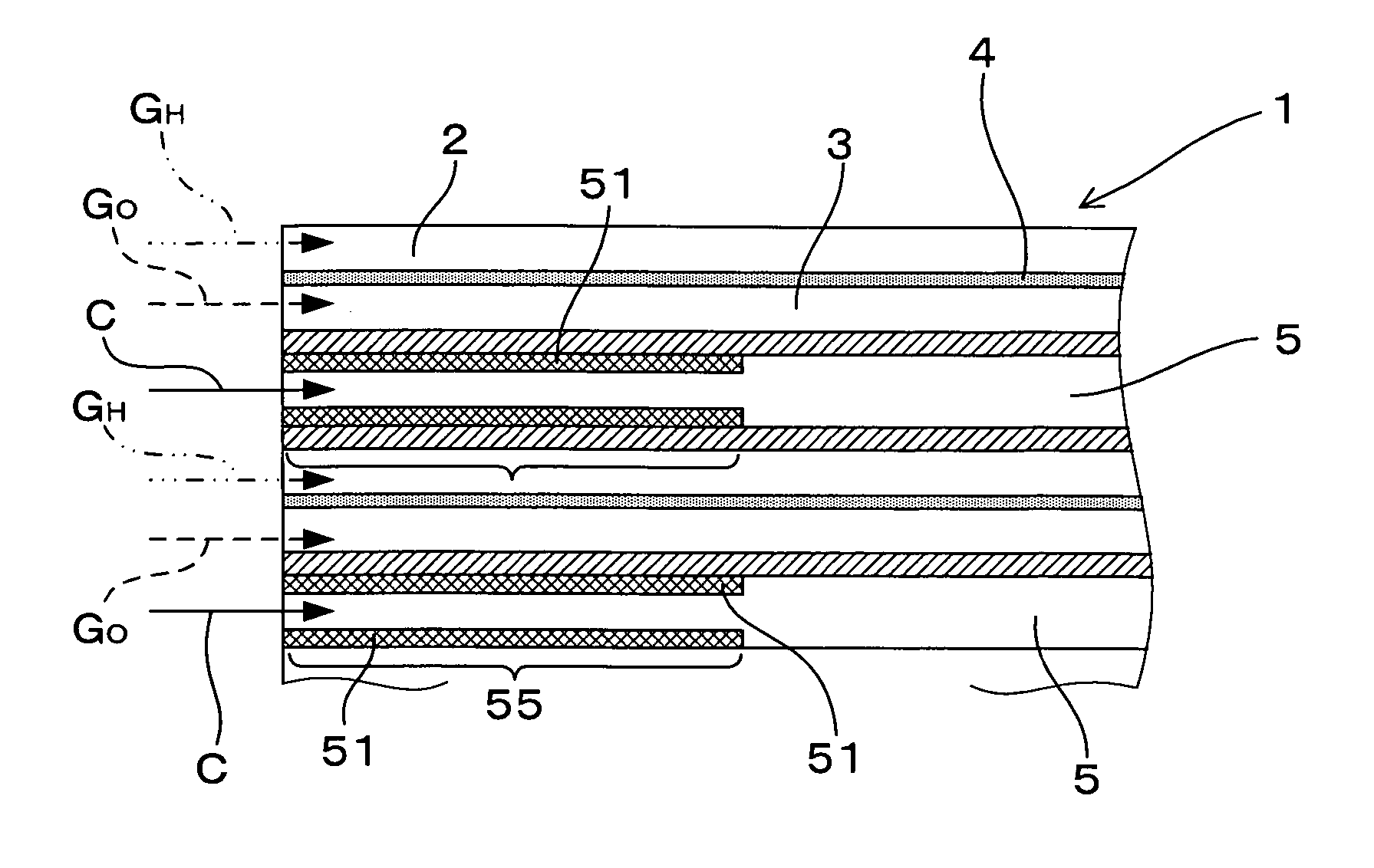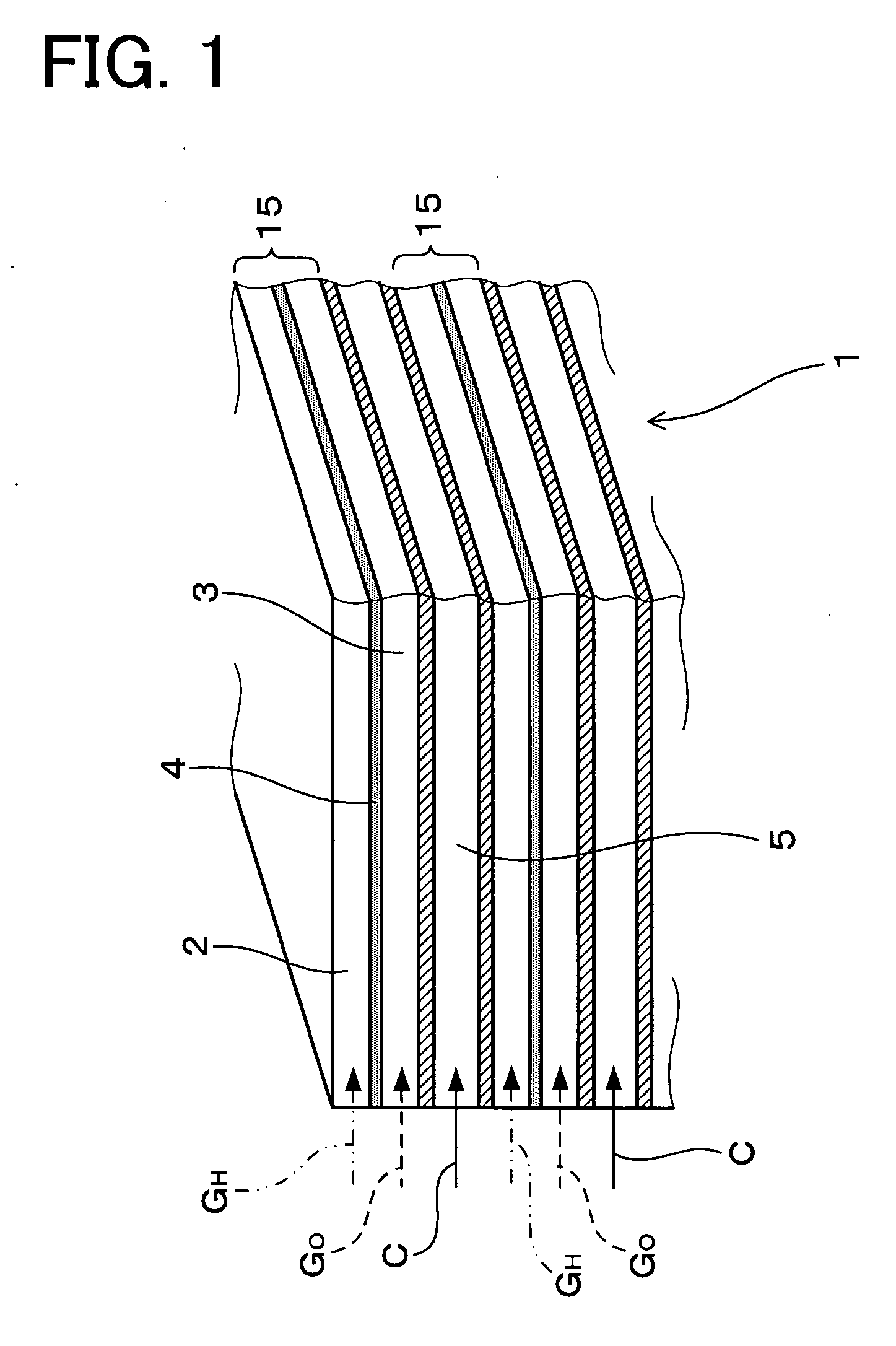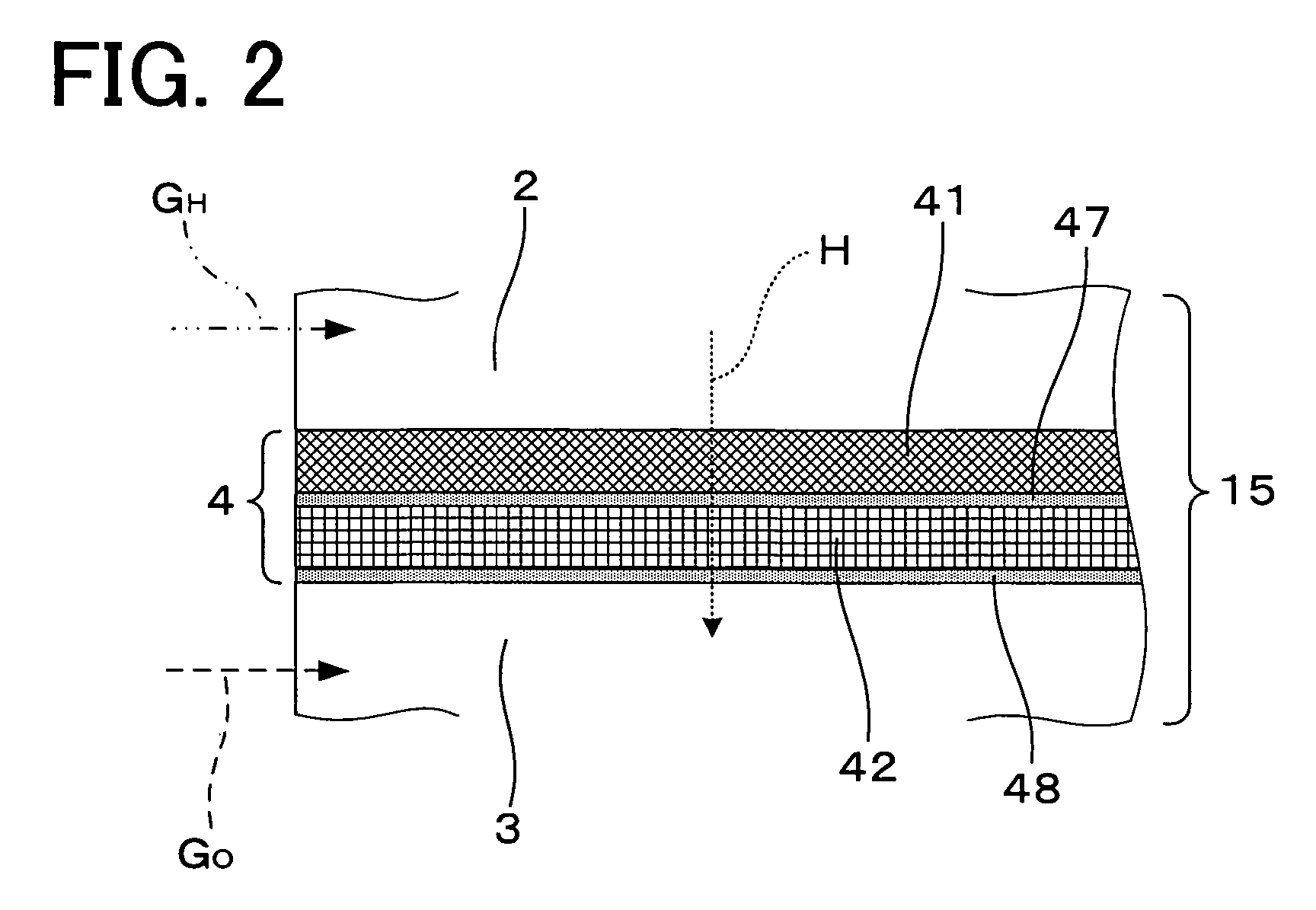Fuel cell
a fuel cell and cell technology, applied in cell components, electrochemical generators, electrolytes, etc., can solve the problems of energy loss, complex configuration of the above-mentioned fuel cell system, temperature difference between an inlet and an outlet of the coolant, etc., to prevent excessive cooling at the inlet side, and reduce the risk of energy loss
- Summary
- Abstract
- Description
- Claims
- Application Information
AI Technical Summary
Benefits of technology
Problems solved by technology
Method used
Image
Examples
embodiments
First Embodiment
[0153] Now, a fuel cell according to an embodiment of the present invention will be described with reference to FIG. 1 to FIG. 3.
[0154] As shown in FIG. 1, a fuel cell 1 according to the present embodiment is made of a laminate of an anode channel 2 supplied with hydrogen or a hydrogen-containing gas GH; a cathode channel 3 supplied with oxygen or an oxygen-containing gas GO; and an electrolyte 4 arranged between the cathode channel 3 and the anode channel 2.
[0155] In addition, the fuel cell 1 according to the present embodiment is further made by laminating a plurality of unit battery cells 15 made by laminating an anode channel 2, an electrolyte 4, and a cathode channel 3.
[0156] In addition, as shown in FIG. 2, the electrolyte 4 is made by laminating a hydrogen separating metal layer 41 for being permeated by hydrogen supplied to the anode channel 2 or hydrogen in the hydrogen-containing gas GH supplied to the anode channel and a proton conductor layer 42 made ...
second embodiment
[0175] In the present embodiment, the low heat conducting section in the coolant channel has been formed by providing a hollow section in a wall of a coolant channel.
[0176] That is, as shown in FIG. 4, in the fuel cell 1 according to the present embodiment, a hollow section 52 is formed by hollowing the wall at the inlet side of the coolant channel 5 partially. In this manner, the passing heat resistance at the inlet side of the coolant channel 5 can be increased. That is, a hollow section 52 is formed in the wall at the inlet side of the coolant channel 5, whereby the inlet side of the coolant channel 5 is obtained as a configuration such as thermos, and heat transfer of this section can be restricted.
[0177] Therefore, in the fuel cell 1 according to the present embodiment, as in the first embodiment, excessive cooling at the inlet side of the coolant channel 5 can be prevented, and cooling using the coolant C can be uniformly carried out. Therefore, the deviation in temperature ...
third embodiment
[0178] In the present embodiment, the low heat conducting section in the coolant channel has been formed by providing a replacement restricting section.
[0179] That is, as shown in FIG. 5, in the fuel cell 1 according to the present embodiment, a replacement restricting section 551 for restricting replacement of the coolant C is formed at the inlet side of the coolant channel 5, thereby forming a low heat conducting section 55. As shown in the figure, the replacement restricting section 551 is formed by providing a hollow section 52 provided in the wall at the inlet side of the coolant C in the coolant channel 5 and openings 521 and 522 provided in the hollow section 52 and opened in the coolant channel 5.
[0180] Specifically, as shown in FIG. 5, the inside of the wall at the inlet side of the coolant C in the coolant channel 5 is hollowed to form the hollow section 52, and the openings 521 and 522 that open in the coolant channel 5 are formed at hollow section 52. As shown in the f...
PUM
| Property | Measurement | Unit |
|---|---|---|
| temperature | aaaaa | aaaaa |
| operating temperature | aaaaa | aaaaa |
| operating temperature | aaaaa | aaaaa |
Abstract
Description
Claims
Application Information
 Login to View More
Login to View More - R&D
- Intellectual Property
- Life Sciences
- Materials
- Tech Scout
- Unparalleled Data Quality
- Higher Quality Content
- 60% Fewer Hallucinations
Browse by: Latest US Patents, China's latest patents, Technical Efficacy Thesaurus, Application Domain, Technology Topic, Popular Technical Reports.
© 2025 PatSnap. All rights reserved.Legal|Privacy policy|Modern Slavery Act Transparency Statement|Sitemap|About US| Contact US: help@patsnap.com



